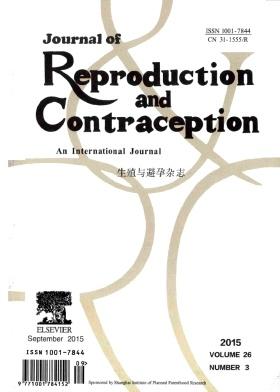Syncytin-A knockout induces placental developmental abnormalities partially through calpain1-apoptosis-inducing factor-mediated trophoblast apoptosis
IF 0.7
4区 医学
Q4 OBSTETRICS & GYNECOLOGY
引用次数: 0
Abstract
Objective: Structural abnormalities and dysfunction of the placenta contribute to pregnancy-related complications, such as preeclampsia. Syncytin-A (synA) has been reported to be expressed in the placenta. The contribution of synA to developmental abnormalities and dysfunction of the placenta remains elusive. In this study, we aimed to explore the role of synA in placental development and functions. Methods: SynA-knockout mice were generated using the CRISPR-Cas9 method, and the phenotypes of the placenta and fetus of synA-knockout mice were observed. Real-time quantitative polymerase chain reaction (PCR) and routine PCR were employed to detect the genotypes of the offspring. CD31 immunohistochemistry was used to evaluate the vessel density of the placenta, and the protein levels of key molecules were measured by western blotting. Results: SynA knockout caused fetal death. Furthermore, synA-knockout mice showed placental developmental abnormalities, indicated by a thinner labyrinth layer, thicker spongiotrophoblast layer, lower blood vessel density, and significantly higher numbers of apoptotic trophoblasts, when compared with wild-type littermates. Mechanistically, synA ablation induced apoptosis-inducing factor (AIF) cleavage and nuclear localization and promoted placental trophoblast apoptosis. In addition, synA knockout increased the calpain1 protein levels. The calpain1 inhibitor calpeptin blocked synA knockout-induced AIF cleavage, partially restoring the placental structural abnormalities of synA-knockout mice. Conclusions: SynA knockout leads to placental developmental abnormalities by inducing trophoblastic apoptosis via the calpain1-AIF pathway.合胞蛋白A敲除部分通过钙蛋白酶1凋亡诱导因子介导的滋养层细胞凋亡诱导胎盘发育异常
目的:胎盘结构异常和功能障碍会导致妊娠相关并发症,如先兆子痫。据报道,合胞蛋白A(synA)在胎盘中表达。synA对胎盘发育异常和功能障碍的作用尚不明确。在本研究中,我们旨在探索synA在胎盘发育和功能中的作用。方法:采用CRISPR-Cas9基因敲除小鼠,观察其胎盘和胎儿的表型。采用实时定量聚合酶链式反应(PCR)和常规PCR检测后代的基因型。CD31免疫组化法检测胎盘血管密度,western印迹法检测关键分子蛋白水平。结果:SynA基因敲除导致胎儿死亡。此外,与野生型同窝出生的小鼠相比,synA敲除小鼠表现出胎盘发育异常,表现为迷宫层较薄,海绵滋养层较厚,血管密度较低,凋亡滋养层数量显著增加。在机制上,synA消融诱导凋亡诱导因子(AIF)切割和核定位,并促进胎盘滋养层细胞凋亡。此外,synA敲除增加了钙蛋白酶1蛋白水平。钙蛋白酶1抑制剂钙蛋白酶肽阻断了synA敲除诱导的AIF切割,部分恢复了synA基因敲除小鼠的胎盘结构异常。结论:SynA基因敲除通过钙蛋白酶1AIF途径诱导滋养层细胞凋亡,从而导致胎盘发育异常。
本文章由计算机程序翻译,如有差异,请以英文原文为准。
求助全文
约1分钟内获得全文
求助全文
来源期刊

Reproductive and Developmental Medicine
OBSTETRICS & GYNECOLOGY-
CiteScore
1.60
自引率
12.50%
发文量
384
审稿时长
23 weeks
 求助内容:
求助内容: 应助结果提醒方式:
应助结果提醒方式:


